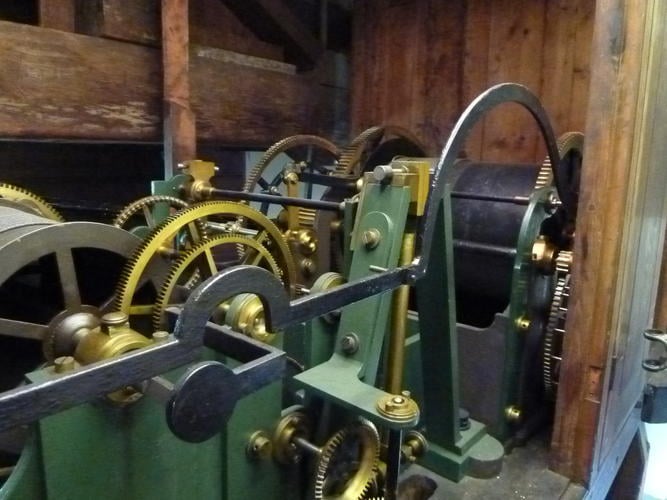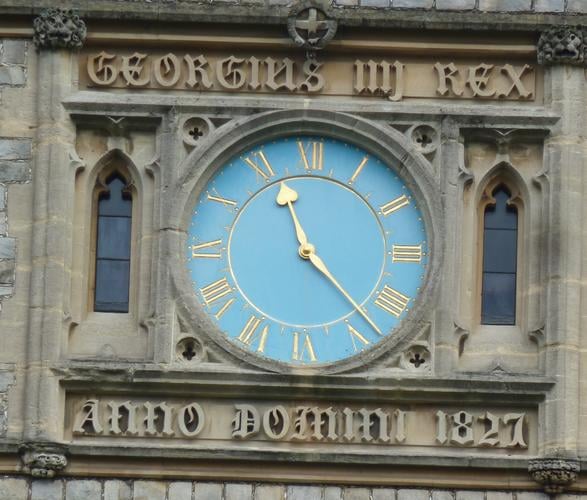Benjamin Lewis Vulliamy (1780-1854)
Turret clock 1829-30
Wood, metal | 214 cm (Width) (diameter) | RCIN 30001
-
The Quadrangle clock was built by Benjamin Lewis Vulliamy in 1829 and installed during George IV's extensive restoration of the exterior of Windsor Castle, replacing an earlier turret clock of 1677 by Joseph Knibb. The dial on the exterior is flanked below by statues by Richard Westmacott of Edward III and his son Edward, the Black Prince. The painted blue dial has the 12 hours represented in Roman numerals and a pair of spade shaped, gilt hands. Vulliamy number 1000 and described in the Clock Book as a 'Large Quarter Turret Clock ... for Windsor Castle'.
The clock has a fine dead beat pin wheel escapement and is driven by three large cylindrical weights weighing 15 cwt. each of which run down from the back of the clock to the back of the Guard Chamber in two shafts. Until an electric motor was fitted in 1957 the clock had to be wound by hand for 488 turns for the hours and 550 turns for the quarters. The time train is still wound by hand with a crank key. The clock strikes on three bells cast by T&W Means in London in 1830, replacing an older bell. The quarter bells are 87 cm and 105 cm in diameter, weighing 7 cwt and 12 cwt respectively. The hour bell is 149 cm in diameter and weighs 37 cwt. The bells are held in a cast iron truss made by J Bramah and are situated on the roof above the clock.
Recent conservation by the Horological Conservators of the Royal Collection have completed a long term project to reinstate the striking and chiming. The clock can now be turned off during the hours of darkness.
-
Creator(s)
(clockmaker)(bellfounder)(founder (metals))(nationality) -
Medium and techniques
Wood, metal
Measurements
214 cm (Width) (diameter)
103.5 cm (Length) (length)
68 cm (Height) (length)
Object type(s)










